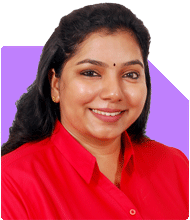Should I tell my children about my retirement plans?
Ramalingam Kalirajan |7911 Answers |Ask -Follow
Mutual Funds, Financial Planning Expert - Answered on Feb 07, 2025
He has an MBA in finance from the University of Madras and is a certified financial planner.
He is the director and chief financial planner at Holistic Investment, a Chennai-based firm that offers financial planning and wealth management advice.... more
.jpg)
I’m 53 now. My spouse and I have saved diligently for retirement. Together we’ve built a corpus of ₹1.5 crore through mutual fund SIPs, PPF, and NPS contributions. Our two children, both in their late 20s, are financially independent but still early in their careers. We’re considering downsizing from our current house, worth ₹1.8 crore, to free up equity and move closer to one of our children. We’re debating whether to discuss our retirement plans with them, especially regarding potential financial assistance if we face health issues in the future. We also want to clarify any inheritance expectations and ensure they’re not financially burdened later. Please advice how to have a stress-free retirement plan.
Let’s create a structured plan for financial security and family discussions.
Assessing Your Current Financial Position
Retirement Corpus: Rs. 1.5 crore in mutual funds, PPF, and NPS.
House Value: Rs. 1.8 crore.
Children’s Status: Financially independent but early in their careers.
Potential Downsizing: Considering selling the house for liquidity.
Future Concerns: Health costs, financial support, inheritance, and stress-free living.
Your savings provide a solid base. But planning ahead is crucial.
Should You Downsize Your House?
Selling will free up capital for better investments.
A smaller house will reduce maintenance and property tax costs.
Moving closer to children will offer emotional and logistical support.
Consider renting instead of buying again for more flexibility.
Structuring Your Investments for Retirement
Ensure a Steady Monthly Income
Keep part of your corpus in mutual funds with Systematic Withdrawal Plans (SWP).
Invest in a mix of flexi-cap, mid-cap, and debt funds for stability and growth.
Avoid index funds, as actively managed funds perform better in the long run.
Emergency and Health Fund
Keep Rs. 10-15 lakh in liquid funds for medical and emergency needs.
Ensure you have adequate health insurance to cover medical costs.
If needed, set aside funds for assisted living or home healthcare later.
Should You Talk to Your Children About Finances?
Clarifying Expectations
Your children are financially independent but may not be prepared for your needs.
Have an open conversation about healthcare, inheritance, and financial support.
Make sure they understand your plans to avoid future stress.
Discussing Financial Assistance
If needed, discuss potential financial support in case of emergencies.
Avoid becoming financially dependent on them unless absolutely necessary.
Keep them informed about your health insurance and long-term care plans.
Managing Inheritance and Estate Planning
Prepare a clear will to avoid legal complications.
Nominate beneficiaries for all investments, insurance, and bank accounts.
Inform your children about your financial plans without creating unnecessary expectations.
Finally
Your retirement is well-planned. But small adjustments will enhance security.
Sell your house if it aligns with your lifestyle goals.
Ensure a steady income from mutual funds while keeping an emergency fund.
Talk to your children about expectations but maintain financial independence.
A stress-free retirement is possible with proper planning and clarity.
Best Regards,
K. Ramalingam, MBA, CFP,
Chief Financial Planner,
www.holisticinvestment.in
https://www.youtube.com/@HolisticInvestment
You may like to see similar questions and answers below
Moneywize |178 Answers |Ask -Follow
Financial Planner - Answered on Mar 02, 2024
Ramalingam Kalirajan |7911 Answers |Ask -Follow
Mutual Funds, Financial Planning Expert - Answered on Jul 10, 2024
Milind Vadjikar |986 Answers |Ask -Follow
Insurance, Stocks, MF, PF Expert - Answered on Oct 10, 2024
Ramalingam Kalirajan |7911 Answers |Ask -Follow
Mutual Funds, Financial Planning Expert - Answered on Dec 21, 2024
Pushpa R |50 Answers |Ask -Follow
Yoga, Mindfulness Expert - Answered on Feb 07, 2025
Ramalingam Kalirajan |7911 Answers |Ask -Follow
Mutual Funds, Financial Planning Expert - Answered on Feb 07, 2025
Ramalingam Kalirajan |7911 Answers |Ask -Follow
Mutual Funds, Financial Planning Expert - Answered on Feb 07, 2025
Ramalingam Kalirajan |7911 Answers |Ask -Follow
Mutual Funds, Financial Planning Expert - Answered on Feb 07, 2025
Ramalingam Kalirajan |7911 Answers |Ask -Follow
Mutual Funds, Financial Planning Expert - Answered on Feb 07, 2025
Ramalingam Kalirajan |7911 Answers |Ask -Follow
Mutual Funds, Financial Planning Expert - Answered on Feb 07, 2025
Ramalingam Kalirajan |7911 Answers |Ask -Follow
Mutual Funds, Financial Planning Expert - Answered on Feb 07, 2025
Ravi Mittal |523 Answers |Ask -Follow
Dating, Relationships Expert - Answered on Feb 07, 2025
Ramalingam Kalirajan |7911 Answers |Ask -Follow
Mutual Funds, Financial Planning Expert - Answered on Feb 07, 2025
Ravi Mittal |523 Answers |Ask -Follow
Dating, Relationships Expert - Answered on Feb 07, 2025
























